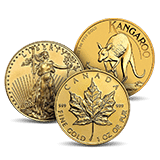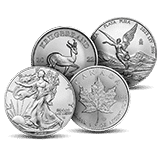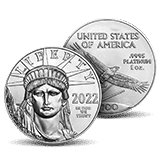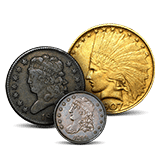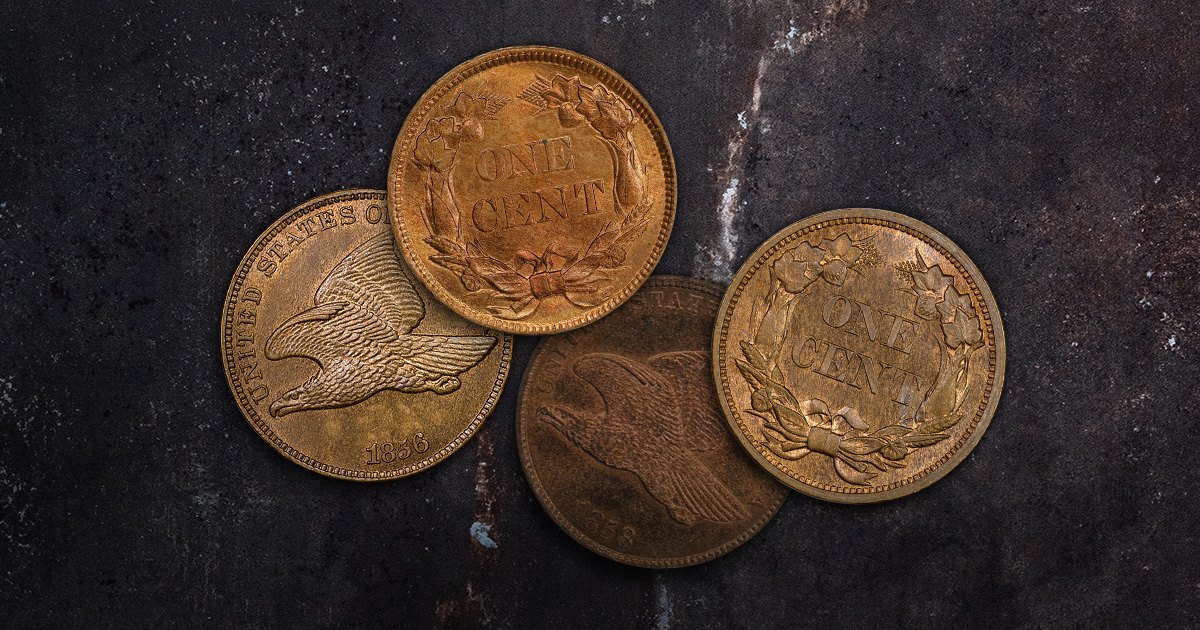
The Flying Eagle penny was a one-cent coin with the shortest issuance of any circulating United States Mint coin. It was designed by the fourth Chief Engraver at the US Mint, James B. Longacre.
Background of the Flying Eagle Cent
By the mid-1850s, the seigniorage associated with the large cent was growing alongside the price of copper. The US Mint needed a practical solution in the form of a lower cost coin. Professor James C. Booth, a melter and refiner for the US Mint, advocated for a small cent like the one Dr. Lewis Feuchtwanger proposed in 1837. He argued that by reducing the size of the cent, the Mint could reduce the seigniorage, and the Mint began producing pattern coins to test the idea.
Flying Eagle Patterns
The Flying Eagle penny was produced as a pattern coin from 1854 through 1856 and was made the same size as large cents with a diameter of 27.5 millimeters. As a pattern coin, it proved immensely popular, and the 1854-1855 Flying Eagle patterns are some of the most popular pattern coins made. This popularity was not lost on Longacre, who noticed the public response and designed a flying eagle based on the Gobrecht dollar and flying eagle pattern.
In 1856, Professor Booth proposed using an 88% copper, 12% nickel composition. After reducing the diameter and thickness, per the Mint, the updated size with Longacre’s design was sent back to Mint officials. That same year, the Mint struck the new size and design of the Flying Eagle pattern coin. While it is technically a pattern, it has the same dimensions as regular issue Flying Eagle pennies and is considered a valuable key date.
Flying Eagle Circulating Issues
The Coinage Act of 1857 required small cents weighing 4.655 grams with Booth’s composition to be issued and large cents turned over to the Mint for melting. In 1857, the first regular issue Flying Eagle pennies were struck and released, but there were issues with the complicated design and hard composition. The design was too complicated for the size of the surface and the new cupronickel planchets, and necessary modifications were made.
As a circulating coin, the Flying Eagle cent was issued from 1857 to 1858. It has the distinction of having the shortest lifespan of any circulating U.S. coin. As the first small American cent, Flying Eagle pennies hold a special place in the history of collectible pennies, sought after by numismatists for their unique design and rarity.
The first type of Flying Eagle penny is the large letter variety. It has a high relief eagle and was used from 1856 until 1858. The large letter variety can be identified by the connected letters A and M in AMERICA, which touch at the lowest serif of both letters.
Since high relief Flying Eagles proved too difficult to mint, the small letter variety was produced to improve the strike’s quality and extend the life of the coin dies. The design of the small letter variety made the relief of the eagle shallower and featured smaller letters with a full separation between the letters A and M in AMERICA. Yet even with these modifications to the design, the pennies were still not fully struck. While another modification was made to flatten the eagle, Mint officials were ready to retire the design and move forward with the Indian Head penny.
Design and Reception of the Flying Eagle Cent
Although few of the models represented on older US coins are known, it is likely that the Flying Eagle model has been identified. James B. Longacre’s eagle on the obverse of the Flying Eagle cent is modeled after the eagle on the Christian Gobrecht dollar struck from 1836 to 1839. Historians like Cornelius Vermeule called Longacre’s eagle “the first numismatic bird that could be said to derive from nature rather than from colonial carving or heraldry.” Vermeule later criticized the Indian Head cent as being “far less attractive.”
Gobrecht did not specifically identify the eagle he used, but multiple parties have stated that the bird was Peter, the Eagle. Peter was a tame eagle that Mint staff fed in the early 1830s until an unfortunate machinery accident killed the gentle eagle. Peter the Eagle was stuffed and is still on display at the Philadelphia branch of the US Mint.
Public Response to the Flying Eagle Cent
The 1856 pattern with the new Longacre was so popular that it sold for as much as $2 in 1859. When the Mint released the Flying Eagle penny on May 25, 1857, hundreds lined up to exchange older Spanish silver cents and large cents for the new issue.
In addition to the public response, designer Augustus Saint-Gaudens wrote that the Flying Eagle cent “is by all odds, the best design on any American coin” in a letter to President Roosevelt. This admiration influenced Saint-Gauden’s designs, as there is an unmistakable resemblance between Longacre’s Flying Eagle and Saint-Gaudens Double Eagle reverse. Today, the Flying Eagle penny is a sought after numismatic treasure beloved by collectors for its unique, short-lived design.
The Value of a Flying Eagle Penny Today
While it was only issued for two years, the Flying Eagle penny exerted a lasting influence on United States coinage. Although they are more common in lower grades, Flying Eagle pennies can command a significant premium today. The 1856 release can even be valuable in lower grades, selling for upwards of $8,000 in VG-8 condition.

